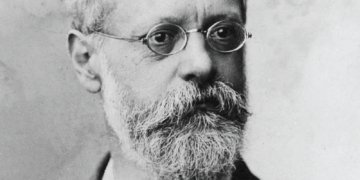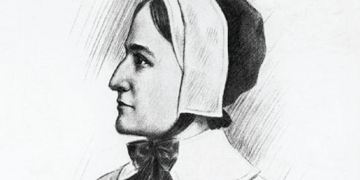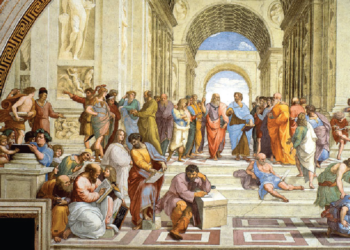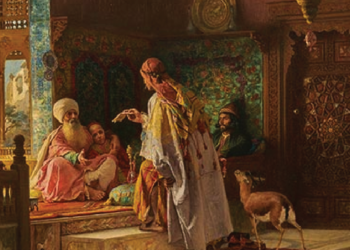Aryabhata
1) His Biography
Aryabhata, one of the most renowned mathematicians and astronomers of ancient India, was born in 476 CE. Although the exact location of his birth remains a matter of scholarly debate, many believe he was born in Ashmaka, a region that may correspond to modern-day Maharashtra or southern India. Some accounts also associate him with Kusumapura, which is often identified with the city of Pataliputra (modern-day Patna), where he is believed to have spent much of his professional life. Regardless of his exact birthplace, Aryabhata’s intellectual legacy left an indelible mark on the scientific heritage of India and beyond.
He is best known for his magnum opus, the Āryabhaṭīya, a compendium of mathematics and astronomy written when he was only 23 years old. This work, written in Sanskrit verse form, consists of 121 verses divided into four sections: Gitikapada, Ganita, Kalakriya, and Golapada. Each section elaborates on various aspects of mathematics and astronomy, demonstrating Aryabhata’s exceptional understanding of complex scientific ideas at an early age. His work marks a significant transition from the oral tradition of Indian science to a more systematised, written body of knowledge.
Aryabhata is widely credited with significant contributions to both pure and applied mathematics. He devised sophisticated methods for solving linear and quadratic equations, developed a novel approximation for pi, and offered a detailed understanding of arithmetic and geometric progressions. These innovations are indicative of a scholar who was not merely repeating inherited knowledge but actively expanding and reformulating it. His mathematical writings went on to influence both Indian and Islamic scholars, setting the stage for further development in the field.
In astronomy, Aryabhata revolutionised existing conceptions of the cosmos. He proposed a heliocentric model in which the Earth rotates on its axis—a theory that contradicted the prevailing geocentric models of his time. His explanation of the causes of eclipses, which dismissed the mythological Rahu and Ketu in favour of a scientific understanding of the shadows cast by the Earth and Moon, was a remarkable departure from popular belief. He also calculated the sidereal rotation and revolution periods of planets with remarkable accuracy.
Despite his groundbreaking work, there is little concrete information about Aryabhata’s personal life. Most of what is known comes from the references made by later scholars such as Bhaskara I and Brahmagupta. These references make it clear that Aryabhata’s reputation endured for centuries and that his writings were used as authoritative sources well into the medieval period. His ability to synthesise and communicate complex ideas ensured that his work was not only respected but actively studied and commented upon by generations of Indian scientists.
It is believed that Aryabhata was appointed the head of an astronomical observatory at Kusumapura, which might have been part of the famed Nalanda University. If true, this association would place him at the heart of one of the most important centres of learning in the ancient world. This role would have given him access to a wide range of intellectual resources and scholarly exchanges that likely influenced his own thinking and allowed his ideas to spread widely through scholarly networks.
Aryabhata’s legacy is particularly notable for its lasting influence. While his writings were largely unknown in mediaeval Europe until much later, they were transmitted through Islamic scholars who translated Indian mathematical and astronomical works into Arabic. In this way, Aryabhata’s ideas became part of the global history of science, contributing to developments during the Islamic Golden Age and eventually entering European thought through Arabic-Latin translations.
In modern India, Aryabhata’s name has been immortalised in various ways. The first Indian satellite launched in 1975 was named Aryabhata in his honour. Numerous educational and scientific institutions also bear his name, celebrating him as a symbol of India’s rich scientific heritage. His life and work continue to be studied not only for their historical significance but also for the depth of intellectual curiosity and innovation they embody.
2) Main Works
Āryabhaṭīya:
The Āryabhaṭīya is Aryabhata’s most celebrated and only known surviving work. Composed in 499 CE when he was just 23, this text is a landmark in Indian mathematical and astronomical literature. Written in Sanskrit verse, the text comprises 121 concise stanzas divided into four chapters: Gitikapada (definitions and astronomical constants), Ganita (mathematics), Kalakriya (time calculations), and Golapada (spherical astronomy). Each verse is packed with technical information, requiring further commentary to unpack. Unlike many of his predecessors who focused on religious calendars, Aryabhata’s approach is largely empirical and mathematically rigorous.
In Āryabhaṭīya, Aryabhata introduces the concept of zero as a placeholder and discusses the positional decimal system, although he does not use a symbol for zero. He offers advanced rules for extracting square and cube roots and solving indeterminate equations of the first degree. Furthermore, he approximates pi (π) to be 3.1416—an astoundingly accurate value for his time. The work had a profound impact on later Indian mathematicians such as Bhaskara I and Brahmagupta, and through Arabic translations, influenced Islamic and European mathematics.
Aryabhata’s Model of the Solar System (as found in Golapada):
Aryabhata’s astronomical innovations, particularly in the Golapada section of Āryabhaṭīya, include a radical departure from mythological and Puranic cosmologies. He proposed that the Earth rotates on its axis, which explained the apparent daily motion of the stars. This was a bold suggestion that predated the European heliocentric theories of Copernicus by nearly a thousand years. Aryabhata’s rotating Earth model was not widely accepted in India at the time, but it demonstrated his willingness to challenge orthodox views through observation and logic.
In addition, Aryabhata offered remarkably accurate calculations of the sidereal rotation and revolution periods of the planets, using epicyclic models that were mathematically sophisticated. He also explained solar and lunar eclipses scientifically, attributing them to the shadows cast by celestial bodies rather than mythological demons like Rahu and Ketu. His work marked a transition toward rational astronomy in India and introduced methods that persisted in Indian astronomical practice for centuries.
Aryabhata’s Trigonometric Tables:
Aryabhata was one of the earliest mathematicians to present trigonometric tables, including the sine (then called ardha-jya, or “half-chord”) values for angles in increments of 3.75 degrees. This was a significant innovation in the development of trigonometry. Instead of using geometric diagrams or arc lengths, Aryabhata compiled these values systematically, making it easier to apply them in astronomical calculations. These tables provided a foundation for the later development of spherical trigonometry in both India and the Islamic world.
The table was presented in the form of differences between successive sine values—a clever way to compress information while enabling interpolation. Aryabhata’s approach allowed astronomers to calculate planetary positions with far greater accuracy. His trigonometric legacy influenced Indian astronomers like Varahamihira and later Islamic scientists such as Al-Khwarizmi and Al-Biruni, who adopted and expanded upon these techniques in their own astronomical treatises.
Kalakriya (The Reckoning of Time):
The Kalakriya section of Āryabhaṭīya delves into the intricacies of timekeeping and calendrical calculations. Aryabhata established a detailed framework for understanding time cycles, including lunar and solar years, months, days, and even smaller subdivisions like kashta and kala. He also defined the yuga cycles (a unit of time equal to millions of years in Indian cosmology) and calculated the number of planetary revolutions during these cycles, introducing a systematic way to synchronise astronomical events with calendrical dates.
Aryabhata’s calculations in Kalakriya revealed a sophisticated understanding of periodicity and astronomical synchronisation. He introduced the concept of mean and true positions of celestial bodies to correct for orbital irregularities. His mathematical precision in handling these long-term cycles is considered a precursor to more complex ephemerides and astronomical almanacs used in later Indian and Islamic traditions. This work demonstrated Aryabhata’s mastery of both empirical observation and abstract calculation.
Contributions to Algebra and Number Theory:
While not published in a separate text, Aryabhata’s contributions to algebra and number theory are embedded within the Ganita section of Āryabhaṭīya. He discussed methods to solve linear equations and indeterminate equations—particularly the kuttaka (pulveriser) method, a forerunner to the Euclidean algorithm. This technique was used to find integer solutions to congruences, forming a foundational part of number theory long before it gained popularity in the West. Aryabhata’s algebraic approach showed an extraordinary level of abstraction and generality.
He also used innovative notational systems, representing numbers with alphasyllabic codes—a mnemonic system that encoded large numbers using Sanskrit letters. This verbal number system made it easier to memorise and transmit large numerical data. Aryabhata’s techniques, especially his handling of congruences and modular arithmetic, would influence later Indian mathematicians like Bhaskara II and eventually find echoes in modern number theory, especially in cryptographic algorithms.
3) Main Themes
The Mathematical Structure of the Cosmos:
Aryabhata’s cosmology was deeply mathematical, reflecting a belief that the universe operated according to measurable and predictable principles. One core aspect of this theme is his assertion that the Earth rotates on its axis, a revolutionary idea that provided a coherent mathematical explanation for the apparent movement of the stars. This was a monumental shift from the Puranic cosmological view dominant in India at the time, which described a static Earth and mythological causes for celestial events. Aryabhata’s model, while not heliocentric in the modern Copernican sense, contained a dynamic view of the cosmos rooted in observational reasoning.
A second aspect is his use of trigonometry and algebra to represent celestial movements. Aryabhata’s sine tables and calculations of planetary positions are grounded in a belief that the cosmos is both numerical and cyclical. By calculating the number of revolutions of the planets over a mahayuga (4.32 million years), he sought to create a unified, mathematical model of time and space. This systematic vision of the cosmos stands in contrast to the observational astronomy of Greek thinkers like Ptolemy, who relied heavily on geometrical models without integrating a broader metaphysical framework of time cycles.
Thirdly, Aryabhata introduced the concept of relativity of motion, stating that just as a person in a moving boat sees the banks of a river moving, so too do the stars appear to move due to the Earth’s rotation. This analogy anticipates Galileo’s ship metaphor by over a thousand years. While Galileo and Copernicus had access to telescopes and empirical tools, Aryabhata’s insights were deduced from pure reasoning, showcasing the originality of his cosmological vision. His mathematical cosmology, therefore, was not only technically advanced but also conceptually ahead of his time in terms of its emphasis on systemic regularity and motion.
Innovation in Positional Numeration and Arithmetic:
Aryabhata’s work marks a seminal moment in the development of the positional decimal system, a cornerstone of modern arithmetic. A first key aspect of this theme is his recognition of place value. Though he did not explicitly use a symbol for zero, his positional system implied its existence. This abstraction laid the groundwork for later Indian mathematicians such as Brahmagupta, who formally introduced zero as a numeral. Aryabhata’s implicit zero enabled the representation of very large numbers and facilitated efficient calculation—a feature absent in Roman numerals and Greek alphanumerical systems.
Aryabhata’s katapayadi system, a technique that encoded numbers in syllables of Sanskrit, allowed complex data to be memorised in verse form. This not only reflects a remarkable fusion of linguistic and mathematical systems but also contributed to the oral preservation of technical knowledge in a time when manuscripts were rare. In contrast, Greek and Chinese systems of mathematical notation remained cumbersome, often limiting their utility in performing arithmetic operations. Aryabhata’s mnemonic numeration system thus shows an original and practical attempt to democratise mathematical knowledge.
Aryabhata did not merely use these methods for solving abstract equations; he applied them to real astronomical problems, thereby integrating arithmetic with observational science. Compared with the Babylonians, who had practical but context-bound arithmetic tables, Aryabhata offered generalised procedures that could be replicated and taught systematically. His arithmetic forms the foundational infrastructure upon which Indian and later Islamic and European mathematics was built.
Algebraic and Number Theoretic Pioneering:
Aryabhata’s contributions to algebra and number theory represent some of the most innovative thinking in pre-modern mathematics. One central aspect of this theme is his introduction of the kuttaka method, or “pulveriser,” a technique for solving indeterminate equations of the form ax ≡ b (mod n). This method provided a systematic way of arriving at integer solutions—a precursor to modern modular arithmetic. It differs markedly from Greek algebra, which largely lacked the concept of general solution algorithms for such problems, and from Chinese algebra, which often relied on case-specific strategies.
Another vital element of Aryabhata’s algebra is his treatment of linear and quadratic equations. He formulated methods for solving equations using root-extraction and proportion-based techniques, embedding these within astronomical contexts. For example, many of these equations were used to predict planetary positions or synchronise time cycles, showing that his algebra was both practical and general. Compared to later Islamic mathematicians like Al-Khwarizmi, who introduced algebra as a distinct discipline, Aryabhata’s algebra was embedded within broader scientific needs, yet conceptually just as rigorous.
Aryabhata utilised Sanskrit verse to encode complex numerical and algebraic relationships—a technique that stands in contrast to the symbolic notation developed in Europe much later. While his method lacked symbolic brevity, it showcased an original way to compress and transmit mathematical ideas through oral and poetic means. His innovations in number theory—especially in handling large numbers and indeterminate forms—position him as a foundational thinker whose work prefigured later advances in both Eastern and Western mathematics.
Time Measurement and Calendrical Science:
Aryabhata made path-breaking contributions to the science of timekeeping, integrating mathematical, astronomical, and philosophical elements. The first key aspect of this theme is his definition and calculation of multiple temporal units—from the minute (kala) to vast epochs like the mahayuga. His computation that a mahayuga spans 4.32 million years, with precise revolutions of planets within that period, reflects not only an advanced understanding of periodicity but also a grand temporal vision unparalleled in Western antiquity.
Aryabhata calculated the length of the sidereal year to be 365.3586805 days, remarkably close to modern estimates. Unlike the Julian calendar, which used arbitrary adjustments like leap years, Aryabhata’s system was grounded in astronomical observation and mathematical consistency. This enabled more accurate prediction of eclipses and planetary conjunctions, which had both scientific and ritual importance in Indian society.
Aryabhata’s view of time was not merely linear or historical but cyclical and recursive. His understanding of time as a recurring pattern—echoing Hindu cosmological cycles—was integrated with empirical observation. This contrasted with the linear conception of time found in Christian and Islamic chronologies. Aryabhata’s approach allowed for both long-term prediction and short-term measurement, blending metaphysical ideas with operational science. His calendrical work deeply influenced the Panchang (Hindu almanac) tradition and continued to shape time reckoning in India for centuries.
Rationalisation of Celestial Phenomena:
One of Aryabhata’s most original intellectual contributions was his rational explanation of celestial phenomena, particularly eclipses. A first critical aspect of this theme is his rejection of mythological causes—namely, the shadow-demons Rahu and Ketu—and his explanation of eclipses in terms of the shadows cast by the Earth and Moon. This was a profound shift from symbolic to scientific explanation and reflects an early form of naturalism in Indian science.
Secondly, he offered geometrically precise models for understanding the movement of celestial bodies, employing epicycles and eccentric orbits. While similar in structure to the models of Ptolemy, Aryabhata’s framework differed by integrating observational data into predictive mechanisms. His model was thus both explanatory and utilitarian, capable of forecasting events like conjunctions and eclipses with remarkable precision. Unlike Ptolemy, who had access to the extensive observational records of Alexandria, Aryabhata’s work was based on regional observations and mathematical interpolation.
His models avoided unnecessary complexities and adhered to parsimony—a quality later celebrated in the work of Copernicus and Kepler. Aryabhata’s insistence on mathematical and observational consistency marked a pivotal moment in Indian astronomy, where empirical rationalism began to take precedence over religious and mythological narratives. His approach laid the intellectual groundwork for a scientific tradition that would later flourish in the Islamic world and influence early modern European thought.
4) Aryabhata as Mathematician
Aryabhata’s stature as a mathematician is not only a testimony to his technical brilliance but also to the originality and depth of Indian mathematical thought during the classical period. He stands as one of the earliest figures to systematise and articulate a wide array of mathematical operations, laying the foundation for several domains that would later develop across the Islamic and European worlds. What distinguishes Aryabhata is not merely his computational skill, but the philosophical and scientific rigour with which he approached mathematics, treating it as a language of nature capable of unlocking the secrets of both earthly and celestial phenomena.
One of Aryabhata’s most remarkable mathematical achievements was his use of place-value notation. Although the numeral zero as a symbol had not yet been introduced, Aryabhata’s work implied an understanding of its function through his use of the decimal system. His innovative manner of representing numbers, especially through the katapayadi and varnasankhya systems, enabled large quantities to be memorised and transmitted in poetic form. This hybridisation of linguistic and mathematical expression was an ingenious solution for preserving knowledge in an era where manuscript culture was still developing. His work anticipated developments in numerical representation that would only be codified formally in the Islamic and later European contexts.
Aryabhata also made extensive contributions to arithmetic and algebra, proposing systematic methods for handling squares, cubes, square roots, and cube roots. His arithmetic procedures, as documented in the Aryabhatiya, not only served abstract purposes but were used directly in his astronomical calculations. He derived sophisticated solutions to linear equations and indeterminate equations—what would now be classified under number theory. Notably, his kuttaka method for solving equations of the form ax+by=c was a precursor to what modern mathematics calls the extended Euclidean algorithm. These techniques showed a conceptual depth not found in the contemporaneous mathematical traditions of Greece or China.
Geometry was another arena in which Aryabhata excelled. He provided a value for π (pi) as approximately 3.1416, astonishingly close to the modern estimate. His formulation, offered in a verse that was both mathematical and poetic, indicates not only precision but also aesthetic conciseness. He proposed that the area of a triangle is half the base times the height, a result well known today but formalised in India independently of Greek geometry. Moreover, his work on the properties of circles, spheres, and arcs—particularly in the context of astronomy—highlighted the practical application of geometric reasoning in observing and predicting celestial behaviour.
Trigonometry, particularly the sine function, was one of Aryabhata’s most original contributions. He developed sine tables at intervals of 3.75 degrees, relying on geometric constructions rather than interpolation. His approach differed significantly from that of Greek mathematicians like Hipparchus and Ptolemy, who employed chords instead of sines. Aryabhata’s sine function laid the groundwork for later refinements in Indian and Islamic trigonometry and eventually influenced European mathematicians during the Renaissance. It also enabled the precise calculation of planetary positions and eclipse timings, thereby demonstrating the integration of pure mathematics and applied science.
Another notable feature of Aryabhata’s mathematical work was its emphasis on algorithmic thinking. Rather than presenting isolated results, he often proposed general rules and formulae that could be applied across various scenarios. This systematic, rule-based approach not only enhanced the teachability of his methods but also exemplified a logical mindset that parallels the development of algorithmic thinking in later computational science. His rules were framed to be both exact and practically usable—qualities that resonated with scholars in the Islamic Golden Age, who translated and expanded upon Aryabhata’s methods.
Aryabhata’s mathematical legacy also lies in his influence on future generations. Indian scholars like Bhaskara I and Brahmagupta cited and expanded upon his work, refining concepts such as zero, negative numbers, and algebraic identities. His texts were translated into Arabic, profoundly impacting scholars like Al-Khwarizmi and Al-Biruni, who absorbed Aryabhata’s computational methods into their own systems. Through this intercultural transmission, Aryabhata became a bridge between ancient and medieval science, connecting Indian numeracy with global mathematical development.
5) His Legacy
Aryabhata’s legacy as a mathematician and astronomer is both profound and enduring. His contributions not only shaped the intellectual landscape of ancient India but also laid the groundwork for future scientific advancements across the globe. His influence spanned over a millennium, impacting not only Indian scholars but also reaching the Islamic world, Europe, and beyond. Aryabhata’s work remains a cornerstone of classical Indian science, with his ideas continuing to inspire contemporary research in various fields of mathematics and astronomy.
One of the most significant aspects of Aryabhata’s legacy is his pioneering work in mathematics. He introduced several mathematical concepts that were ahead of their time, such as the decimal system, sine functions, and an approximation for π that remains remarkably close to modern values. His Aryabhatiya, a concise treatise on astronomy and mathematics, became a foundational text in Indian mathematics, influencing successive generations of Indian mathematicians like Brahmagupta, Bhaskara I, and Bhaskara II. The adoption and development of his techniques in subsequent centuries created a strong mathematical tradition in India, which would later be passed on to the Islamic world through translations and commentaries, notably influencing scholars such as Al-Khwarizmi and Omar Khayyam.
In the field of astronomy, Aryabhata’s impact was equally transformative. His heliocentric theory, although not fully developed as a modern heliocentric model, was one of the earliest attempts to explain the Earth’s rotation on its axis and the motion of the planets around the Sun. This was a stark departure from the geocentric models that dominated both Greek and Indian astronomy until then. Aryabhata’s approach to astronomy was grounded in observation and mathematical calculation, providing not only a theoretical framework for understanding the cosmos but also a practical set of tools for predicting astronomical events such as eclipses and planetary movements. His precise calculation of the length of the solar year, as well as his theory of eclipses, marked him as one of the foremost astronomers of his time.
Aryabhata’s influence also transcended the Indian subcontinent, particularly through the translation of his works into Arabic. His Aryabhatiya was translated by several Islamic scholars during the medieval period, which allowed his ideas to spread through the Middle East and North Africa. The Arab scholars, who were highly engaged with mathematical and astronomical learning, adopted and expanded upon Aryabhata’s methods. For instance, the famous mathematician Al-Khwarizmi, often called the “father of algebra,” was influenced by Aryabhata’s work, particularly his use of algorithms and number theory. In the Islamic Golden Age, scholars further refined Aryabhata’s techniques in astronomy, such as his methods for calculating planetary positions, and these ideas later influenced Renaissance Europe.
Beyond the Islamic world, Aryabhata’s work also influenced the development of Western scientific thought. While his contributions were not directly acknowledged by early European scholars, his ideas on mathematical notation, trigonometry, and spherical astronomy indirectly shaped the foundations of later developments in Europe. The concept of sine, for example, was vital to the development of trigonometry in Europe, particularly during the Renaissance. Aryabhata’s focus on mathematical precision and practical application of his theories paralleled the shift in Europe from medieval scholasticism to a more empirical and mathematical approach to science, as seen in the works of Copernicus, Galileo, and Kepler.
In modern times, Aryabhata’s legacy continues to be celebrated in both scientific and cultural contexts. His name was immortalised in the launch of India’s first satellite, Aryabhata, in 1975, which symbolised India’s growing prowess in space technology and its deep respect for its scientific heritage. This satellite, which carried Aryabhata’s spirit of scientific exploration, was a testament to the enduring relevance of his ideas. It was a fitting tribute to a man who not only advanced the knowledge of his time but whose work continues to resonate with modern scientific endeavour.
Aryabhata’s holistic view of mathematics and astronomy also had a lasting influence on the Indian tradition of scientific inquiry. His belief in the importance of observation, mathematical modelling, and empirical verification laid the foundations for later Indian scientists, such as Varahamihira and Bhaskara II, to build upon. His integration of astronomy with practical applications like timekeeping and calendrical science influenced subsequent Indian thinkers, creating a rich intellectual tradition that persisted well into the medieval period.
However, Aryabhata’s legacy is not confined to just the academic or scientific domains. His approach to knowledge, characterised by precision, simplicity, and integration of theory with practice, continues to inspire modern scientific thinking. In a world where data and computational models dominate the scientific process, Aryabhata’s methods of abstraction, precision, and the quest for universal laws still resonate. His contributions to the philosophy of science and his methodical approach to solving real-world problems remain relevant in the modern era.












